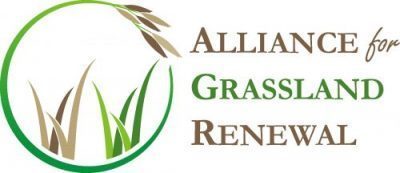Renovating a pasture by replacing common toxic tall fescue with a novel variety typically entails choosing one single novel grass cultivar/novel endophyte combination (e.g., Jesup MaxQ, Texoma MaxQII, etc.). Effective management of the newly established stand requires making that stand as resilient as possible to disturbances, such as drought, while promoting the enhancement of essential soil properties like nutrient availability.

One strategy employed to improve overall pasture production and sustainability is to broaden plant diversity. For example, clovers interseeded into tall fescue stands improve forage quality while also boosting soil nitrogen levels for continued forage productivity. What if there was a way to reap the benefits of greater pasture diversity while still planting a pure and productive tall fescue stand?
Could fescue stands be more productive and resilient by increasing diversity within tall fescue cultivar/endophyte combinations? That’s the premise behind Dr. Rebecca McCulley’s study planted at the University of Kentucky’s Spindletop Farm in Lexington. Mixtures of two, three, and four-way seed mixes of different tall fescue cultivar/endophyte sources were planted in 2016, with the hypothesis that greater numbers of unique cultivar/endophyte combinations would make stands more productive, competitive, and sustainable. These plots were evaluated in 2021, five years after establishment, to compare low diversity (endophyte free varieties and monocultures of single varieties) to two and three-way cultivar/endophyte combinations of higher diversity.
Plots were harvested twice per year in the spring (April) and the fall (September). While there were no differences in the amount of tall fescue biomass produced in the spring, more diverse plots produced greater fescue biomass in the fall (roughly 12% more biomass in diverse stands). Diversified stands produced more fescue in the fall because those stands effectively limited the invasion of other plant species such as orchardgrass and Kentucky bluegrass into the plots. Stands that included three cultivar/endophyte combinations were purer tall fescue stands compared to endophyte-free or single cultivar monocultures. Maximizing tall fescue biomass production in the fall is especially important for those producers who want to stockpile larger quantities of tall fescue for winter grazing and limit hay feeding.
Besides more competitive and persistent stands, greater tall fescue diversity improved several key soil quality indicators. With greater fescue diversity, soil P and K availability increased in the 0-10 cm soil depth and soil cation exchange capacity increased in the 10-20 cm depth. Soil carbon, important for many soil microbial and plant functions, decreased in the top 10 cm of soil but increased in the deeper 10-20 cm depth. Deeper storage of carbon is beneficial as it is less susceptible to losses associated with erosion, tillage, and other disturbances.
In summary, increasing the diversity of tall fescue cultivar/endophyte combinations had significant productivity and sustainability benefits:
- Increased fall fescue biomass production (by limiting other plant species such as orchargrass and Kentucky bluegrass from invading stands)
- Improved soil carbon and nutrient accumulation
Planting two, three, or four-way mixes of tall fescue cultivar/endophyte combinations is an easy way to take advantage of diversity benefits in pastures. In addition, the only management change occurs on the front end when seed is mixed in the drill, making this a producer-friendly option to improve overall productivity and sustainability in tall fescue pastures.
–Alayna Jacobs,
(recent PhD graduate of the McCulley Lab at the University of Kentucky)
For more information, contact Dr. Rebecca McCulley:
Office Phone (859) 257-6388
The Alliance for Grassland Renewal is a national organization focused on enhancing the appropriate adoption of novel endophyte tall fescue technology through education, incentives, self-regulation and promotion. For more resources or to learn more about the Alliance for Grassland Renewal, go to www.grasslandrenewal.org
